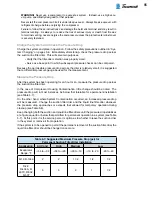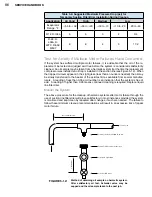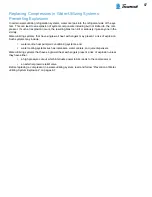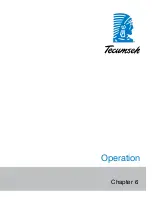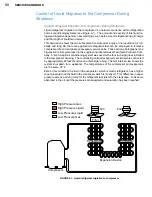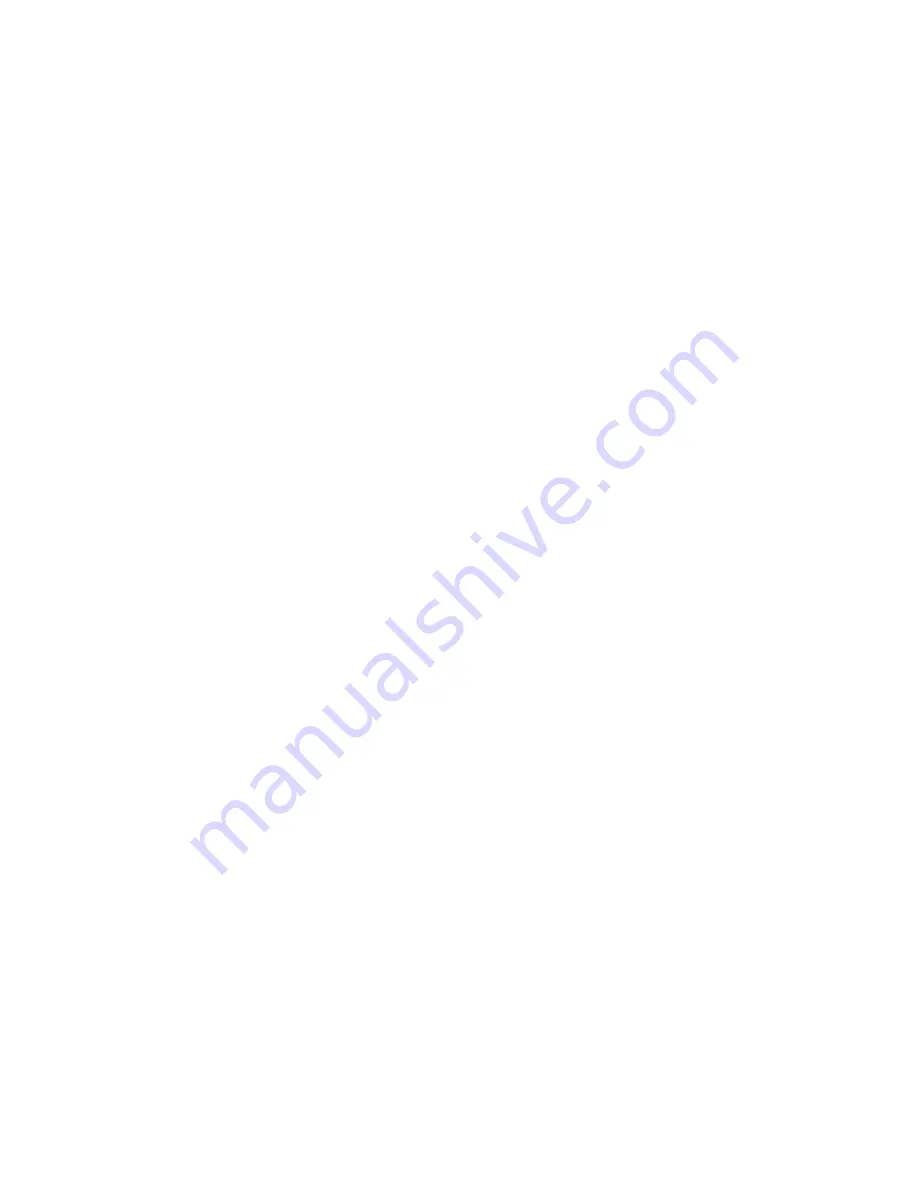
84
SERVICE HANDBOOK
Determine Extent of System Contamination
Following the precautions in ”Refrigerants and Other Chemicals” and “Compressor
Removal” on page 4, remove the compressor.
Use the following guidelines to determine whether contamination, if any, is limited to the
compressor or extends to the system.
If the discharge line shows no evidence of contamination and the suction stub is clean
or has only light carbon deposits, then the contaminants are limited to the compressor
housing (Compressor Housing Contamination). A single installation of liquid and suction
line filter-driers should clean up the system.
If, however, the discharge line or the suction line shows evidence of contamination, the
compressor was running at the time of the motor failure and contaminants were pumped
throughout the system (System Contamination). If System Contamination has occurred,
several changes of the liquid and suction line filter-driers will be needed to cleanup the
system. In addition, the expansion device will need to be replaced. If the system is a heat
pump, the four way valve should be replaced.
Install Replacement Compressor and Components
1. Install the replacement compressor with new external electrical components (capacitors,
relay, overloads, etc., where applicable). Check the contacts of the starting control or
contactor.
2. Install an oversized liquid line filter-drier.
3. Install a generously sized suction line filter-drier immediately upstream of the
compressor. The filter-drier when permanently installed in a clean system or as initially
installed in a dirty system, must have a pressure drop not more than listed in Table 5-7.
Pressure taps must be supplied immediately before and after the suction filter-drier to
permit the pressure drop to be measured.
If a suction line accumulator is present and System Contamination has occurred, it
must be thoroughly flushed to remove any trapped sludge and thus prevent it from
plugging the oil return hole. The filter-drier should be installed upstream of the accu-
mulator and the compressor.
In the case of Compressor Housing Contamination, the filter-drier should be installed
between the compressor and the suction line accumulator.
Rubber refrigeration hoses are not satisfactory for temporarily hooking up the suction
line filter-drier to the system since the acid quickly breaks down the rubber and plastic.
4. Follow the precautions in “System Flushing, Purging, and Pressure Testing or Leaks”
on pages 4-5 to purge the system and pressure test for leaks.
Evacuate the System
Evacuate the system to less than 500 microns using a good vacuum pump (not a com-
pressor) and an accurate high vacuum gauge.
An alternate and more thorough method of evacuation known as "triple evacuation" is as
follows:
1. Evacuate the system to 1500 microns. Break vacuum with the serial label refrigerant or
an inert gas up to 2 psig. Leave vapor charge in system for a minimum of five minutes.
2. Repeat Step 1.
3. Evacuate system to 500 microns. Charge system with the specified kind and quantity
of refrigerant.
Summary of Contents for AH5540E
Page 1: ...Hermetic Compressor Service Handbook Wholesale Distribution North America...
Page 2: ......
Page 3: ...Hermetic Compressor Service Handbook Ann Arbor MI 48108 REV 3 11...
Page 4: ......
Page 8: ......
Page 9: ...Chapter 1 General Service Safety Precautions...
Page 16: ......
Page 17: ...Chapter 2 Model and Application...
Page 22: ......
Page 23: ...Chapter 3 Compressor Motor and Component...
Page 36: ......
Page 37: ...Chapter 4 Servicing...
Page 38: ...30 SERVICE HANDBOOK...
Page 79: ...71...
Page 80: ......
Page 81: ...Chapter 5 Installation and Replacement...
Page 96: ......
Page 97: ...Liquid refrigerant migration to compressor FIGURE 6 1 Chapter 6 Operation...
Page 108: ......
Page 109: ...Appendix...
Page 113: ...105 Reciprocating Compressor FIGURE A 2 Internal view of typical air conditioning compressor...
Page 118: ...110 SERVICE HANDBOOK Notes...
Page 119: ......
















